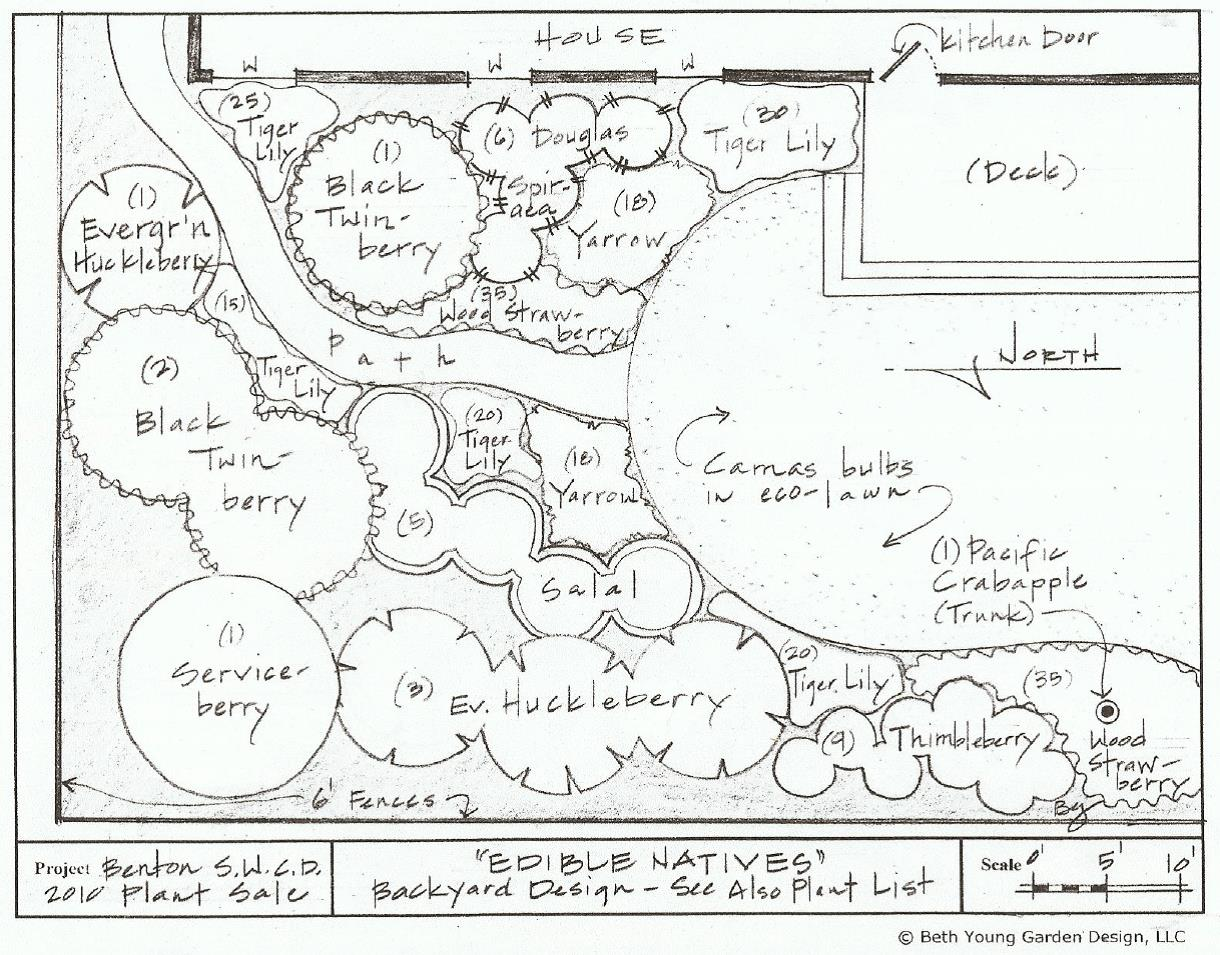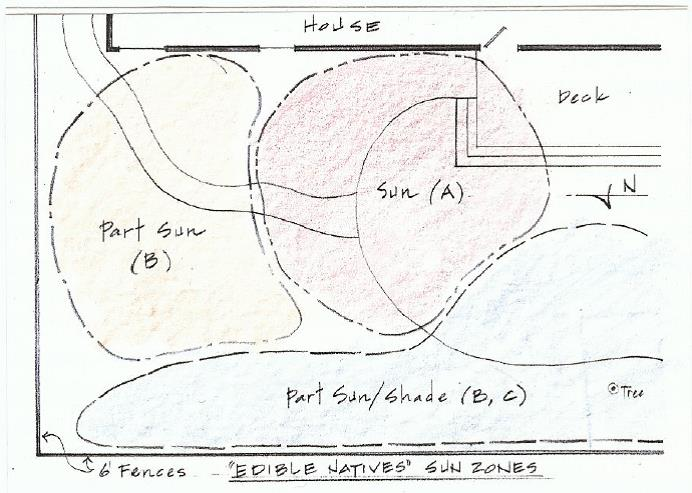Garden Plan | Native and Edible
Heath Keirstead | November 30, 2015

Native and Edible: A Backyard Design
Featuring plant of the 2010 Benton SWCD Plant Sale
By Beth Young, Beth Young Garden Design LLC, www.bygardendesign.com, 541-738-2971
This is the year of the edibles! We Northwest-ers are getting into local food, big time. And what’s more local than your backyard? Native edibles are low-care (if planted in the right place) because they are uniquely adapted to our soil, weather and seasons. And while they are providing berries for our jam, they are feeding and housing our birds, bees, bugs and other native critters that badly need our help. Using an out-of-print treasure I found at Browser’s Bookstore, Wild Edible Plants of the Western United States by Donald Kirk (1970), here’s what I found:
Black twinberry (Lonicera involucrata) – the berries are pleasant when eaten raw, and may be dried for later use.
Pacific crabapple (Malus fusca) – the small apples may be eaten raw and “make good jelly, pies, applesauce, etc.”
Serviceberry (Amalanchier alnifolia) -the berries have a pleasant, often sweet flavor. They may be eaten raw, cooked or dried.
Evergreen huckleberry (Vaccinium ovatum) – the berries are delicious raw, make excellent pies and jellies, are good in pancakes and muffins, and dry and keep well. This is referring to anything in the Vaccinium genus, which includes huckleberry, blueberry, whortleberry, and bilberry.
Salal (Gaultheria shallon) – the thick-skinned berries are tasty raw or cooked
Thimbleberry (R. parviflorus) – edible berries are excellent raw or in jellies and pies
Camas (Camassia leichtinii) – NOT the death camas with cream colored flowers! – These blue-flowered bulbs can be eaten raw but are at their best when cooked. For the finest flavor, the Native American way of steaming in a fire pit for 1-2 days is best. The cooked mass will be brown in color, soft and sweet to the taste. It may be eaten immediately or pressed into cakes and dried over a fire or in the sun. Note: please don’t dig camas bulbs in the wild!
Tiger Lily (Lilium columbianum) – All true lilies have edible bulbs. The lilies may be eaten raw or cooked and have “excellent flavor.”
Wood Strawberry (Fragaria vesca) – The berries are small and sweet; some western Native Americans prepared tea from the green leaves (this refers to any wild Fragaria).
Not edible – on the plan but not edible are: Douglas spirea, yarrow.
Notes about the plan
Sun: First I figured out what plants to use, as I always do, then I placed them in the garden according to sun requirements. The sun zones are shown below.

Size: Natives have not been used in gardens as long as ornamentals; as a result we don’t have accurate information on ultimate sizes. I chose sizes based on the Sunset Western Garden Book (2007), the Benton SWCD online information and experience with my own natives.
Watering needs: Most of these plants are well-suited to our summer drought (once the roots are established). The plants that will probably need some summer watering are: black twinberry, evergreen huckleberry, thimbleberry, Douglas spirea and tiger lily.
Evergreens: If you are looking for more evergreens in your plan, you might want to add tall Oregon grape and sword ferns.
